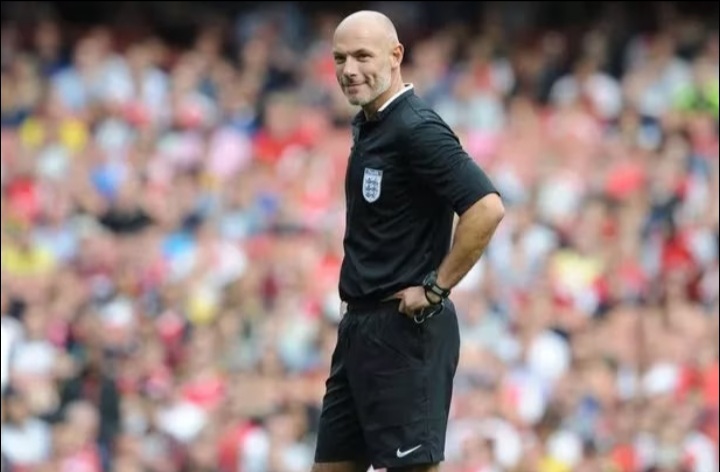Former Premier League referee Keith Hackett has responded to PGMOL chief Howard Webb regarding his comments on a controversial incident in Arsenal’s win over Manchester City. Webb claimed that referee Michael Oliver didn’t want to have a negative impact on the game by “overreacting” during Arsenal’s 1-0 victory.
The incident in question involved midfielder Mateo Kovačić’s rash tackle on Martin Ødegaard, for which he received only a yellow card. Hackett and Liverpool fans have challenged Webb’s statement, calling for consistency in refereeing decisions.
Webb’s argument, made on the Mic’d Up Show with Michael Owen, acknowledged the desire for consistency among referees. He admitted that Kovačić’s tackle was clearly a poor one and stated that if Oliver had issued a red card, it would have been a straightforward decision not to overturn it.
“We want to be as consistent as we can be throughout every game among our group,” said Webb. “”[We’re] dealing with the same situations each week but all situations vary slightly, we understand this, this is clearly a poor tackle [from Kovačić] and I’m confident if a red card had been given by Michael Oliver on the day it would’ve been a very straightforward ‘check complete’.
“But he issued a yellow card. I think there’s a few differences [between this and Malo Gusto’s red card for Chelsea versus Aston Villa], Kovačić comes into the tackle, there’s weight on the left leg as he lunges in. The right heel hits the ground and the contact is on the side with an upright foot opposed to a sidefoot that we seen from Gusto. A few small differences that lead the VAR to feel that the onfield decision here of yellow card wasn’t clearly and obviously incorrect. Therefore ‘check completing it’ would’ve been a re-refereeing by the official on the field.”
Quite apart from any similarity with Gusto, Liverpool would have liked to see a comparison to the Curtis Jones challenge which earned a red card against Spurs. But it was Webb’s assessment of why Kovačić did not go on to receive a second yellow card that will have been particularly galling:
“[Was he fortunate to stay on after the yellow] I think so. Second yellows are not something the VAR is able to get involved in but he was an extremely fortunate player to stay on the field of play.
“Our referee is one of the best referees in the world, he will view that, he doesn’t want to have a negative impact on the game by overreacting to something. Players will sometimes be on a yellow card and there will be pressure.”
Webb did concede that ‘under-reacting’ can be a problem too. But Liverpool will be mystified by this talk of what is essentially game management from referees, after Diogo Jota was shown two yellow cards in quick succession in the same Spurs match that saw Jones dismissed.
Former referee Keith Hackett joined the discussion, calling for consistency and dismissing Webb’s suggestion of “overreacting” to a red card:
“The first challenge was a red. The first in Oliver’s game was a straight red. Say it and we might get some consistency out of this group of referees. A red would not be overreacting. A red would have been the correct application of law.”
The debate surrounding refereeing decisions and consistency is not new in football. Fans, players, and pundits often scrutinize the actions of referees and VAR officials, seeking fairness and accuracy in decision-making. In high-stakes matches, such as those involving top teams like Arsenal and Manchester City, the spotlight on referees intensifies.
The incident involving Kovačić’s tackle and the subsequent yellow card decision has sparked a broader conversation about refereeing standards. Liverpool fans, in particular, have highlighted their own experiences with questionable decisions and called for greater consistency across all matches.
As football continues to evolve, so too should the mechanisms for officiating matches. Technology, such as VAR, has been introduced to assist referees in making more accurate decisions. However, its implementation has not been without controversy. The challenge lies in finding the right balance between human judgment and technological assistance to ensure fair outcomes.

